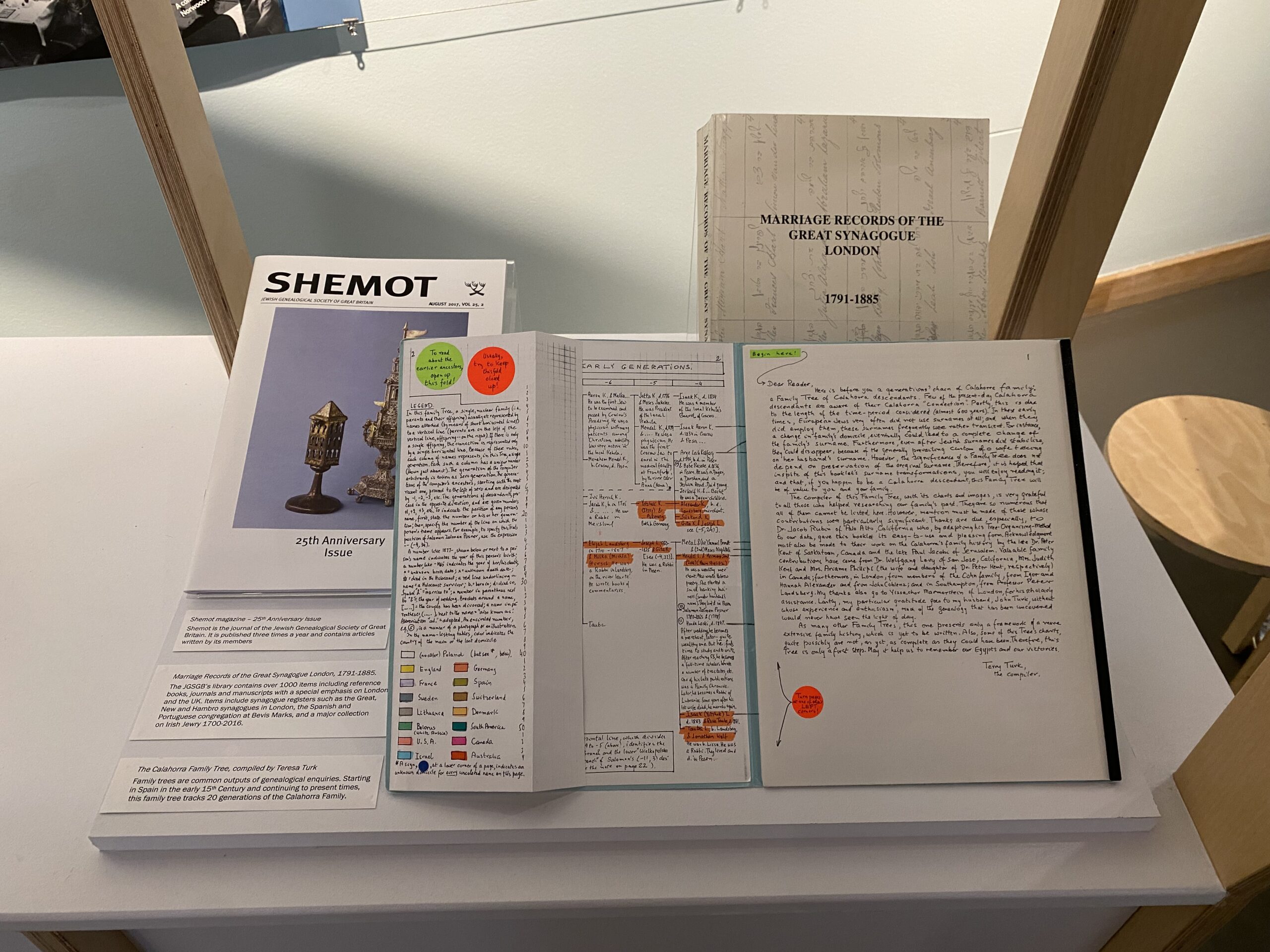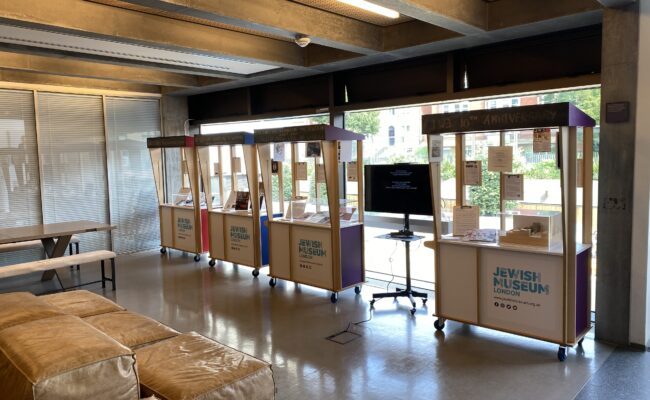Jewish Genealogical Society of Great Britain: A conversation between Adam Corsini, Jewish Museum London & Daniel Morgan-Thomas, Vice Chair, JGSGB

Museum: Let’s start by you tell us a little bit about the Jewish Genealogical Society.
Daniel: So we’re the only Jewish Family History Society in Great Britain and we’re a member led charity dedicated to help anyone find out about their Jewish ancestors. Whether or not they currently see themselves as Jewish is a moot point really. We’re there for anyone who had Jewish ancestors living in the UK and anyone who currently lives in the UK and has Jewish heritage elsewhere that they want to find out about.
We were established in 1992 so we’re just coming up to our 30th anniversary. When we began, genealogy mainly involved looking at register books, walking around cemeteries, maybe phoning people up if you weren’t where they were to ask if they had records in front of them. And it’s seen a huge transformative change with the arrival of the Internet. A lot of the websites that our members used or signed up to in the late 1990s, they’ve gone from simple email message boards to now with huge amounts of data where our members can find documents about their ancestors from decades and centuries ago, all online. So it’s obviously changed a lot.
Museum: What kind of things do you collect as a society?
Daniel: Well, our library is really a jewel of our organisation. It’s got over 1000 items, mainly published books about different Jewish communities. Some of them are collections of records about individual communities, either within UK or from around the world; our members have ancestors from all over Western Europe, Eastern Europe, Middle East, North America. In some cases, it’s places our ancestors ended up after they came through Great Britain. But we also have collections of member donated family trees, which our members have spent a lot of their research time working on and producing.
Selecting an object
Museum: The first item you’ve selected is a family tree
Daniel: The thing about family trees is despite the move from a very pre digital age of having to go and do everything in person, there’s still something incredibly satisfying about making a family tree chart; it’s a very attractive thing to display, to show one’s own ancestry going back or descendants of a common ancestor in the past. We have all sorts of charts from the middle of last century right the way up to fancy things made on modern software, which are still very attractive. Most genealogists really like to be able to show their families that it’s not just names and dates, it’s having a tree that they can share with their descendants as well.
When people start a family tree, they tend to call it being bitten by the geological bug. Unfortunately, the most common things we get from those starting off is a wish that they had asked whoever – parents, grandparents – asked them questions when they were still around. Our advice is always find the oldest person you know you’re related to and ask them what they remember. Because you won’t miss out on knowing what they know.
Museum: Tell us more about the magazine and book on display.
Daniel: Shemot is our journal, which we’ve run since 1992. It’s a great way for people to share their research by writing articles and includes professional archivists and researchers, but also our own members’ contributions. And it’s a lovely thing to be able to do, to share your research with a community; a wider, slightly more scholarly audience. To be able to share your family story in our journals, it’s great, you can make a family tree and maybe share that with your family. But often, we have so much in common, research techniques and areas we’re interested in that our members get a huge amount out of receiving our journal and hearing the stories of our members and our research.
Our library has lots of published books, but we also have a number of collections from the pre digital age where you get transcribed records that have had limited access. That’s very important. And the Great Synagogue registers represent the centre of the 19th Century Ashkenazi Jewish community in London. Although some are online now, people still like to come and flip through this bound copy. Although we don’t hold records in the sense that we’re not an archive, we are a place where vital records around Jewry are accessible, and people can find their ancestors in it.
—————————————————————————–
For more information, visit: www.jgsgb.org.uk
